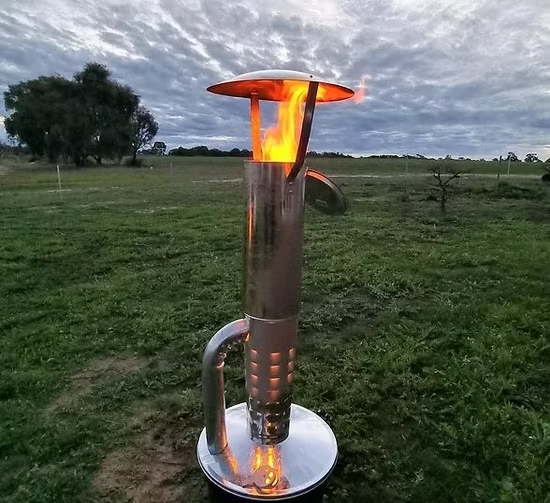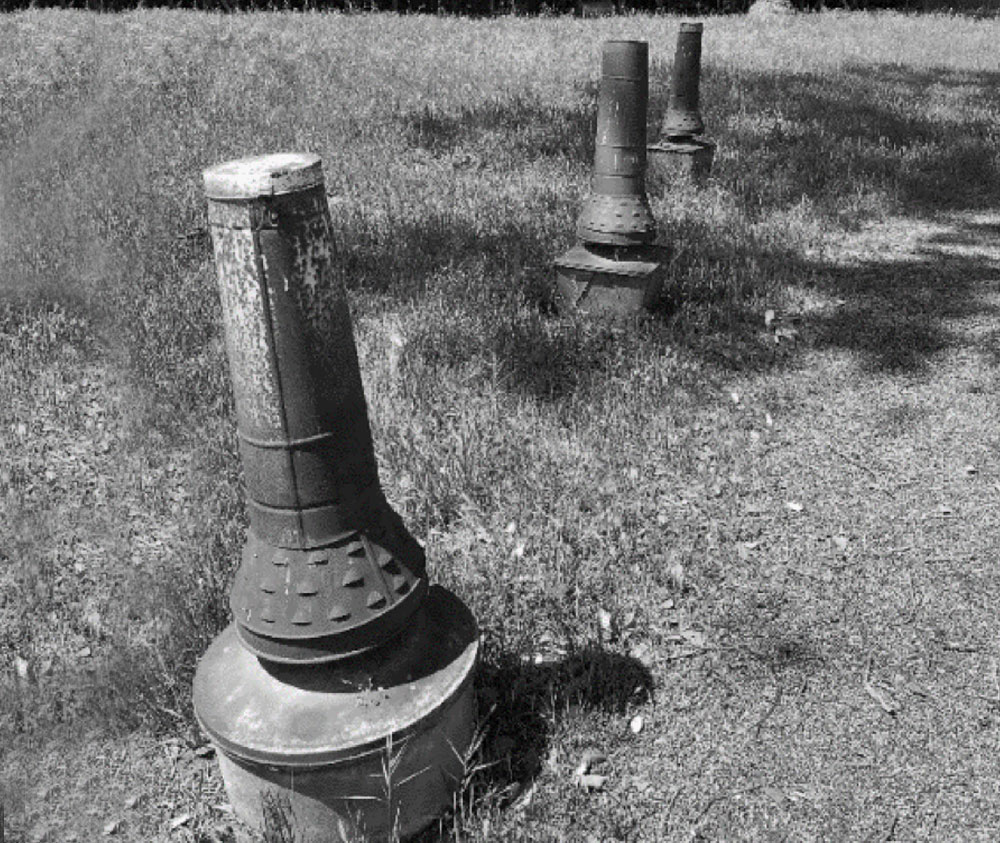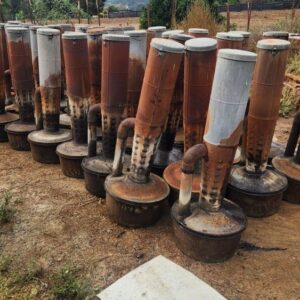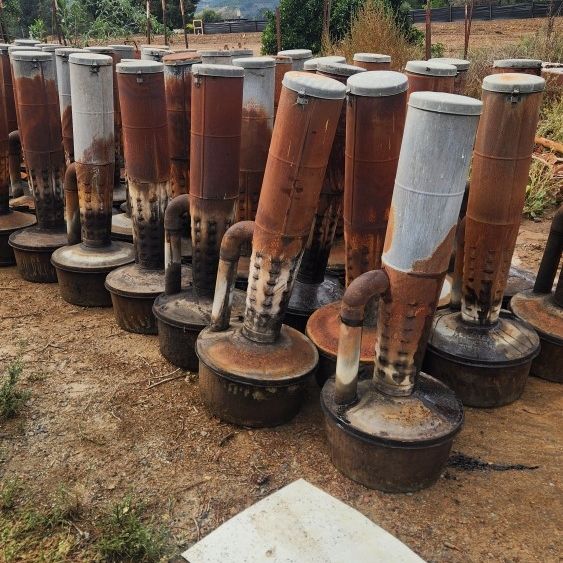What Happened to Smudge Pots? The Forgotten Flame That Saved Orchards
Picture this: A freezing night in the countryside. Farmers walking between rows of fruit trees. Metal pots glowing orange, smoke curling into the cold air. If that scene feels familiar, you’re likely from a generation that remembers what real farming looked like—long before drones, apps, or smart irrigation.
That strange-looking metal pot with a chimney?
That’s a smudge pot — once a must-have tool for any orchard battling frost.
What Is a Smudge Pot?

To someone seeing it for the first time, a smudge pot might look like an old lantern or a small outdoor heater. But it had one very important job: protecting crops from freezing temperatures.
How It Works
A smudge pot is a metal canister with a chimney. Inside, farmers poured diesel or kerosene, lit it, and the pot would burn slowly, releasing thick, warm smoke.
- The heat from the fire helped warm the air around the trees.
- The smoke created a kind of blanket, trapping warmth close to the ground.
In a way, it was like a space heater for fruit trees, but way grittier (and way smokier).
See a vintage smudge pot in action on YouTube
Why Did Farmers Use Smudge Pots?
Frost might not sound like a big deal, but in farming, it’s deadly.
Just one night of below-freezing temps during bloom season could destroy a farmer’s entire harvest — especially for sensitive crops like:
- Citrus (oranges, lemons)
- Avocados
- Peaches and nectarines
- Apples
- Grapes
When frost threatened, farmers didn’t have apps or automated frost sensors. They had to rely on their instincts, experience, and a row of flaming pots to save their trees.
Learn more about frost damage in orchards from UC Agriculture
A Field on Fire: How It Looked and Felt
During a frost event, orchards transformed into eerie glowing landscapes. Hundreds—sometimes thousands—of smudge pots lined the fields.
Imagine this:
- The sky is dark and clear.
- The temperature is dropping fast.
- Farmers are lighting pots by hand, one row at a time.
- The smell of burning oil fills the air.
- Smoke rolls low and heavy across the field.
It wasn’t clean. It wasn’t fun. But it worked.
It was exhausting, dirty, and often an all-night job. But it was the best shot they had.
What Were Smudge Pots Made Of?
Most smudge pots were made of steel or cast iron, built to withstand hours of burning.
Key parts:
- Fuel tank at the base
- Vertical chimney to help spread smoke
- Sometimes had a valve to adjust airflow or burn rate
- Some even had multiple burners in one unit (like Return-Stack orchard heaters)
They came in a few types:
- Conical smudge pots: The classic, most common shape
- Return-stack pots: Had a tube that re-burned exhaust for more smoke
- Sleeve-type heaters: Used air intake sleeves for more efficient burning
Why Did Smudge Pots Fall Out of Use?
Smudge pots were once the go-to defense against frost. But over time, they faded away. Here’s why:
1. Air Pollution
The thick black smoke wasn’t exactly eco-friendly. Smudge pots pumped soot and unburned fuel into the air. That caused health concerns—especially near towns.
Cities started banning their use due to air quality laws starting in the 1960s and 70s.
2. Fuel Costs
Smudge pots burned diesel or kerosene, which got expensive fast. Keeping hundreds of pots going during a long cold spell was costly—both in fuel and labor.
3. Modern Frost Protection
Technology eventually replaced fire and smoke:
- Wind machines blow warmer air from higher altitudes down to tree-level
- Overhead irrigation creates a thin ice layer that insulates blossoms
- High-tech sensors and alerts tell farmers exactly when and where frost will hit
These tools are cleaner, more precise, and easier to manage.
Read more about modern frost protection at Progressive Farmer
The Emotional Side: Nostalgia and Grit
For many older farmers, smudge pots weren’t just tools. They were a way of life.
- Lighting the pots became a family ritual during hard winters.
- Kids were often sent to help refill fuel.
- The glow of the orchard was a sign that everything possible was being done to save the crop.
There’s a kind of beauty in that:
Hard work. Grit. Hope is lit by flame.
Smudge pots were a symbol of resilience. And for those who lived through it, the memory is strong.
Where Are Smudge Pots Now?
Smudge pots aren’t completely gone. You might still find them in:
- Older rural orchards, especially in places with unpredictable frosts
- Antique stores or vintage farm auctions
- Converted into yard art, patio heaters, or decor
- Museums Preserving Farming History
Some are even restored and used at vintage events or farm demonstrations.
Explore smudge pots for sale on eBay
Did Smudge Pots Work?
Yes—and no.
They worked well enough, especially when used in large numbers. But they were never 100% reliable, and they were labor-intensive.
They didn’t always cover large areas evenly, and the effect depended on:
- Wind conditions
- Type of trees
- Fuel quality
- Number of pots used
Today’s frost tools are more accurate and efficient—but smudge pots got the job done when there were no other options.
Bonus: Smudge Pots in Pop Culture

Believe it or not, smudge pots have made appearances in:
- Vintage postcards and photos of California’s Central Valley
- 1940s and 50s farm documentaries
- Background scenes in older films set on farms or orchards
They were once such a part of rural life, that people didn’t even question them—just like windmills or tractors.
See historical smudge pot footage at Archive.org
Conclusion: A Warm Glow from a Bygone Era
Smudge pots may no longer light the night in most orchards, but their story still burns bright. They’re more than just rusty old farm tools. They represent:
- A time when farming was hands-on and heart-heavy
- When survival meant lighting fires, not apps
- And when frost meant fire and faith, not just forecasts
If you recognize a smudge pot right away, you’re part of a special generation—the golden generation that remembers the hard work behind every harvest.
And if this is your first time hearing about them? Now you know how one small flame once stood between disaster and survival—for entire families, fields, and futures.




